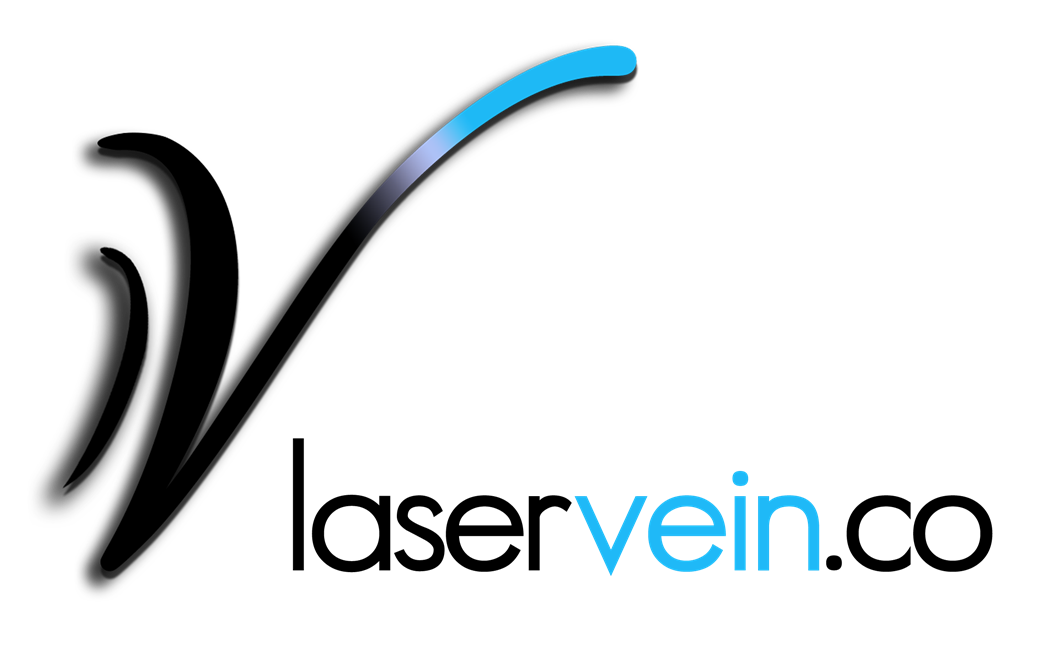FAQ
How do veins form?
The essential defect is a weakness in the valves or walls of the veins that allows blood to flow in the wrong direction.
Veins are supposed to carry the blood from the limb back towards the heart, upwards against gravity. This feat is managed by the presence of valves within the veins themselves, which shut to prevent backwards flow of blood towards the feet. If the valves are defective, faulty or weak then there tends to be backwards flow through the valves in the wrong direction down the vein. This places extra strain on other valves in the vein, which may then also fail.
The common area of initial leakage is in the groin (saphenofemoral junction), where the large surface vein joins the vein inside the leg. The valve behind the knee is the second most common site of failure (saphenofemoral junction) followed by smaller veins in the thigh or calf called perforating veins. Failure of valves at these junctions results in excess strain on the vein below, which tends to blow out and also become leaky. This is the reason veins tend to become progressively worse with time.
Aggravation is also caused by pregnancy or obesity, which throws additional strain on the valves in the veins of the lower limbs. As the veins stretch under the additional pressure they tend to dilate, become longer and thus tortuous appearing like a bunch of worms.
The pressure inside the veins can become so great in the lower part of the limb that leakage of blood occurs into the tissues (Diapedesis) giving rise to brown staining of the skin and dermatitis. Damage to the circulation and the tissue under the skin occurs making the legs inflamed and hardened. Fluid leaking through the veins, because of the high pressure within, causes swelling around the ankles. Eventually damage to the limb tissues is so great as to result in ulcer formation. Very superficial blowouts can occur and these sometimes break and bleed.
All of these complications of varicose veins can be managed initially by the use of compression stockings or bandages, however stockings do not stop the progressive process of varicose vein growth.
What causes Varicose Veins?
An inherited predisposition to valve weakness or vein weakness is the most common cause of varicose veins in the lower limbs.
Pregnancy and/or obesity accelerates the formation of varicose veins.
Malformation in the blood vessels of the limb, usually the result of a birth defect in the blood vessels.
Previous deep vein thrombosis in the leg.
How are Varicose Veins treated?
Initial management of the symptoms of varicose veins can be by intermittent elevation of the leg. This reduces pressure in the veins and allows reduction in swelling and discomfort. The normal horizontal position of the body in bed at night provides relief from the symptoms of varicose veins.
Elastic stockings can assist with the symptoms of varicose veins. These provide external support (compression) to the limb. Unfortunately the stockings are sometimes unpleasant to wear because of tightness and warmth. They are only useful for alleviation of symptoms, they do not prevent varicose veins. The use of elastic stockings may, in fact, make the leg feel more uncomfortable and therefore is of no benefit for the patient. The exception is when stockings are used to treat complications like ulcers when acceptance of discomfort is unavoidable.
Injection treatment is possible for minor superficial varicose veins and for discoloured areas. Injections under ultrasound guidance are also useful for larger varicose veins or recurrent varicose veins after previous surgery. Injection treatment with coil occlusion of veins is a new technology. It is under investigation and has good results over 10 years. Injection and coil treatment does not require hospitalization for more than a couple of hours. A few hours off work following treatment is all that is required.
Laser, Coiling, Ultrasound Guided Sclerosis or Surgery are still the major means of controlling large varicose veins. The aim of these treatments is to remove refluxing veins (veins flowing backwards) from the limb leaving normal veins untouched.
Various investigations into the use of laser, electro coagulation, coil occlusion and valve repair have all been undertaken. Treatment decisions are now made after anatomical mapping of veins with Duplex Ultrasound. Non-surgical methods of control of varicose veins now have a major role in venous disease. Laser and electro coagulation combined with injection treatment are effective and enable outpatient treatment but complications are similar to surgery. Patient comfort is now much better after treatment for varicose veins.
Aim of surgery and other treatments
The operation for varicose veins is designed to ligate points of venous valve failure and extract the varicose veins from the leg by means of multiple small incisions. The technique is known as “ligation, puncture and extraction”. Usually removal of the surface thigh vein or calf vein is required and this is performed by invaginating rather than “stripping” the vein. This technique allows for reduced trauma and a faster recovery. Preoperative ultrasound (duplex scan) is used to identify all the points of valve failure so as few as possible valve leaks are missed at surgery. At present this technique has resulted in a 95% rate of “cure” for high-pressure varicose veins over 5 years. Follow up ultrasound and/or injection therapy is sometimes required as vascular neogenesis occurs in most people in the form of new veins.
When you have Laser treatment only needle punctures occur and normal mobility is resumed in 2-3 hours. This can be done as an outpatient or inpatient. Bruising is common but transient. Bandages are required for the first day with showering resumed the next day
When you have venous surgery you can expect an incision, approximately 1 – 3 cm long, over the site of leaking valves. These are generally at each groin and less frequently behind the knee. Some of the incisions for extraction of the varicose veins themselves will be approximately ½ – 1 mm in length and will be closed by single suture or adhesive tape. Most extraction sites are small punctures (less than 1 mm) and will not require any suture or closure at all. Firm compression bandages are applied at completion of surgery. Only minimal blood loss occurs with this surgery so transfusion is not considered a possibility The leg(s) are firmly bandaged from toes to groin which can impede walking to a mild degree for 2 days. Driving a car may be challenging during the first 2 days post op. Re-bandaging of leg(s) takes place on the second day after surgery and usually involves transfer into stockings.
The hospital time for surgery is in the range of 1 – 2 days, depending on comfort.
Hospital time for Coiling or Laser treatment is 1-2 hours with a similar period of bandaging and impeded mobility. Lumpy veins however take longer to absorb and produce lines of brown staining from haemosiderin deposition.
All treatments are 99.9% safe, there being a 1:1000 chance of further hospital admission for thrombosis or infection. All treatment modalities are of similar risk. The risk of loss of life or limb from complications of surgery is extremely small (less than 1:50,000.)
Are Varicose Veins dangerous?
Rarely. The only dangerous complications of varicose veins are:
(1) Clot (surface thrombosis) ascending up the thigh towards the groin
(2) Bleeding from bubble-like varicose veins around the foot and ankle.
Thrombosis is rare and easy to detect because of pain and a firm lump in the thigh. This complication requires urgent surgery.
Bleeding can occur if a small vein gets injured, often toweling dry after a shower. This can open a small vein and lead to substantial blood loss. First aid is leg elevation and immediate compression with the thumb followed by a firm bandage.
Either of these complications can be lethal. You will be advised if either of these complications is likely at the time of your consultation.
Are Varicose Veins preventable?
No! The only reliable means of preventing varicose veins is to remove gravity from the equation. Crossing the legs whilst sitting does not cause varicose veins.
Are Varicose Veins curable?
Not really. Large varicose veins are usually curable with surgery for a 10 year period. Injection treatment alone is not normally able to cure large varicose veins. With ultrasound mapping, surgery is now able to cure large varicose veins in 95% of patients for at least 5 years. Varicose veins tend to recur with pregnancy, obesity, other illnesses and with time. Recurrences are often manageable by sclerotherapy. New treatments yet to be proven in the long term are Coil Occlusion and Laser Ablation of varicose veins . These two new treatments allow for outpatient treatment but long-term results are yet to be finalized. Coil occlusion therapy with Sclerotherapy can manage most vein patients and appears effective at five years duration but long-term studies have yet to be done. Smaller “spider veins” (venules) and surface varices recur throughout life and are only manageable by repeated treatment with injections. One can liken this management to regular “haircuts” but less frequent as the injections are usually good at clearing veins for a couple of years at a time.
Should I have my veins fixed?
The indication for varicose vein surgery is patient request, except for dangerous circumstances like thigh thrombosis or bleeding. The main purpose of treatment is to manage the complications and symptoms mentioned on page one. It is essentially 100% safe to keep your varicose veins unless thigh thrombosis (very rare) or bleeding occurs. Varicose veins are associated with a minor increased risk of thrombosis of the deep veins (Deep Vein Thrombosis) under normal conditions. Air travel, long bus or car trips may predispose to deep vein thrombosis but this is not a reason to have your varicose veins treated surgically. Surface thrombosis in the varicose veins is not uncommon but is usually harmless although painful. It is never too late to request treatment as age is not a contraindication to treatment. Recurring ulceration, pain or bleeding often drives people to seek treatment but most treatment is elective.
Will I have enough veins left after surgery?
The deep veins inside the leg are the main system for blood transport back to the heart. These are not involved in varicose vein surgery. However, these deep veins are put under additional strain by leaky surface varicose veins so removal of the abnormal surface veins actually lessens the load on the deep system. Therefore varicose vein surgery reduces the strain on other leg veins.
Will I need my veins later in life?
You may! The use of leg vein for bypass surgery remains the best way of saving legs from gangrene secondary to blocked arteries. People who can expect to have this problem are smokers and diabetics. The use of leg vein for heart bypass is no longer common as other vessels are now used for this type of surgery.
For diabetic patients valve repair may be a preferable therapy for varices. Cessation of smoking is always advised, not only to make surgery safer but also to reduce the likelihood of death or limb artery disease.
Which treatment is best for me?
Your initial consultation with your Vascular Surgeon is the time to ask about the best option for treatment. For very large, complicated varicose veins, surgery is still the quickest and most comfortable method of treatment. For modest, less complex problems, Sclerotherapy , Coil Occlusion or Laser ablation are more attractive options as they do not involve significant hospital time. All therapies are of equal safety (99.8%) but side effects vary. After surgery bruising lumps and bumps with discomfort have resolved by 6 weeks. After Sclerotherapy, Laser and Coil treatment lumps, bumps and tenderness may take 3-6 months to resolve and disclouration may last more than 12 months.

